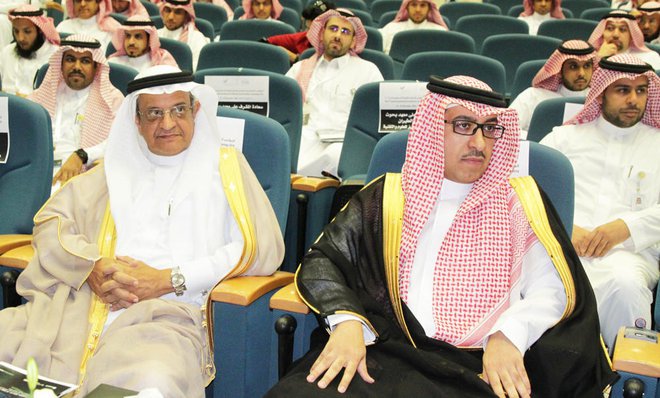
KACST predicts a sharp rise in Saudi Arabia’s ICT spending
The volume of Kingdom’s spending on information and communications technology (ICT) remains the highest in the Gulf region.
Anas Al-Faris, program director at the Joint Centers of Excellence, said here Sunday that Saudi Arabia has spent SR111.98 billion in 2014, up over the previous expenditure of SR94 billion in 2012. The spending is greater than the combined volume of expenditure of the GCC countries, he added.
Al-Faris was speaking on behalf of King Abdul Aziz City for Science and Technology (KACST) President Prince Turki bin Saud bin Mohammed Al-Saud at the Fourth Saudi International Conference on Information Technology: Big Data Analysis.
The event was formally inaugurated by Minister of Telecommunication and IT Mohammed Al-Suwaiyel at the headquarters of KACST in Riyadh with local and foreign experts in attendance.
Al-Faris, who later made a keynote speech on Dynamics Platforms, said that there is still room for rapid increase in these expenditures on ICT during the implementation of Vision 2030.
He pointed out that KACST accords top priority to the development of ICT and has set up five centers — the National Center for Technology Computer and Applied Mathematics; the National Center for Technology Electronics Photonics; National Center for Technology Robotics Intelligent Systems; the National Center for Technology Sensors and Defense systems; and the National Center for Information Technology Security.
KACST also has a program for technology incubators and centers of excellence in common with major universities and international companies that promote development of telecommunications and technology research information, he said, adding that the city has implemented a number of strategic plans that contribute to specialized human resources.
Presenting his scientific paper during the maiden technical session of the conference, Al-Faris said many cities in the world are experiencing rapid growth due to various factors, such as natural population growth, urbanization and immigration. These driving forces impact cities in myriad ways, he added.
"By combining high resolution spatio-temporal data from multiple sources with the topological characteristics of the city, as well as employing a wide range of methods for modeling and data analysis, human behavior such as movement patterns and social interactions can be evaluated.”
The four-day intensive event is an opportunity for big-data practitioners and academics to present the latest research and innovations in the compilation and use of big data sets. It provides an opportunity to gain inter- and multidisciplinary perspectives on the research and development of big data.
It aims to create an excellent environment to share scientific discussions and to foster collaborations in the area of big data analytics that would not only benefit IT students, engineers and academics, but also attract potential investors and entrepreneurs to engage and invest in big data analytics and its related technologies.
Both theoretical and practical papers will be presented during the conference. The conference submissions and talks will cover three main streams, mainly big-data processing, big-data analytics and big-data applications.



























